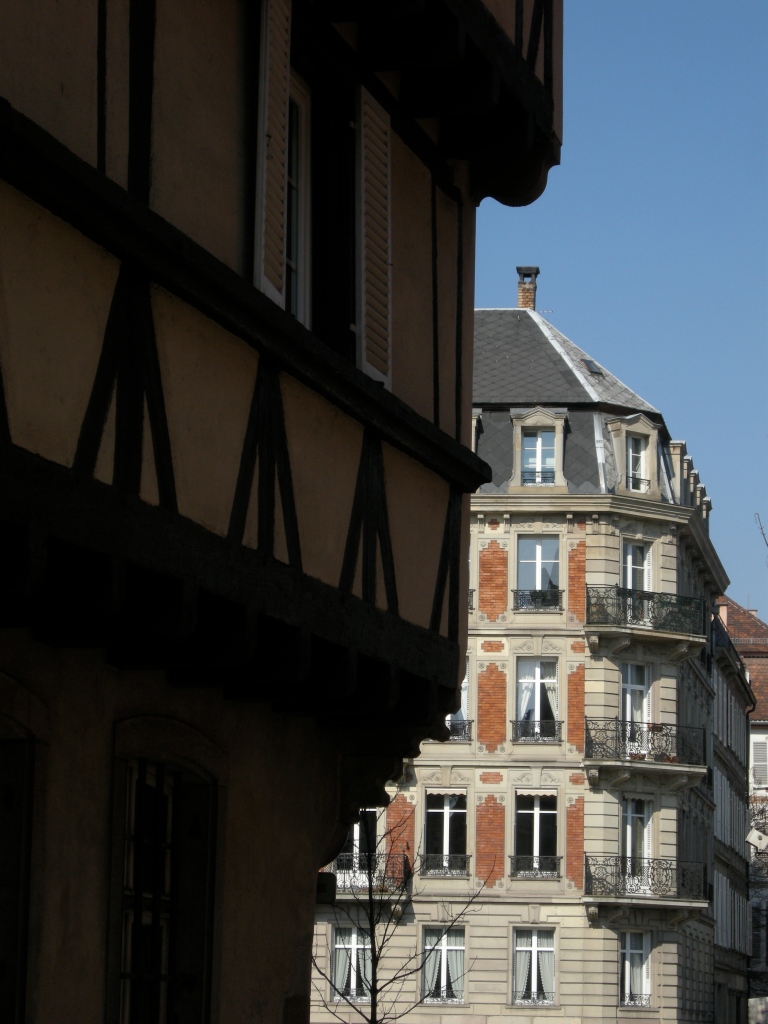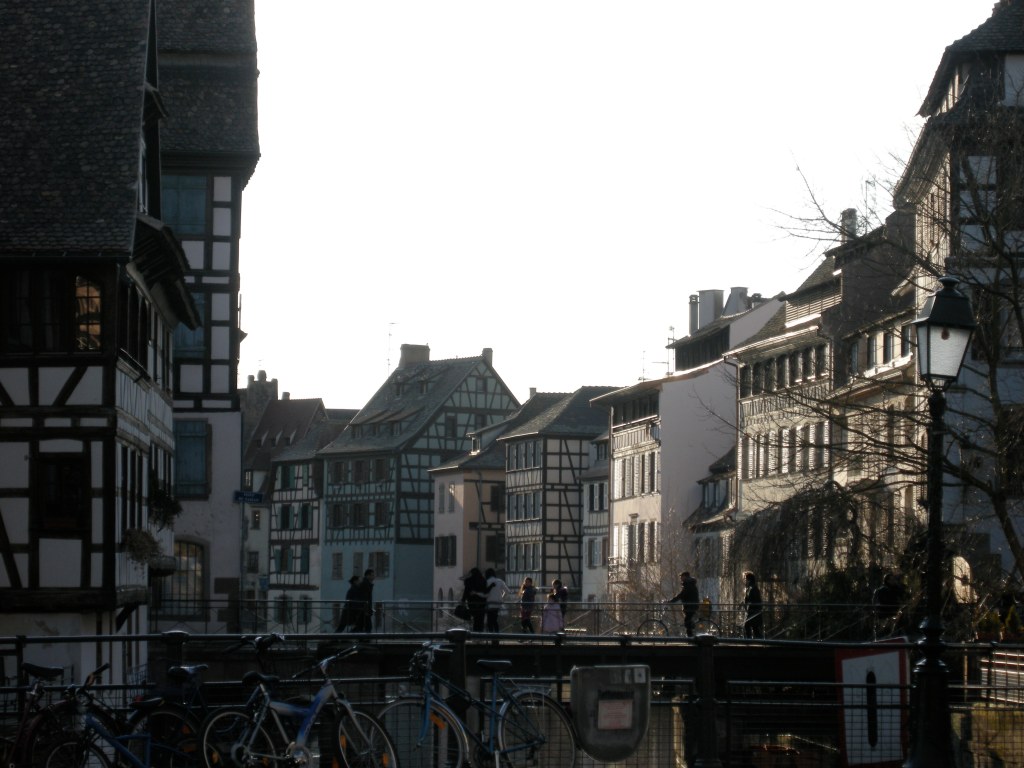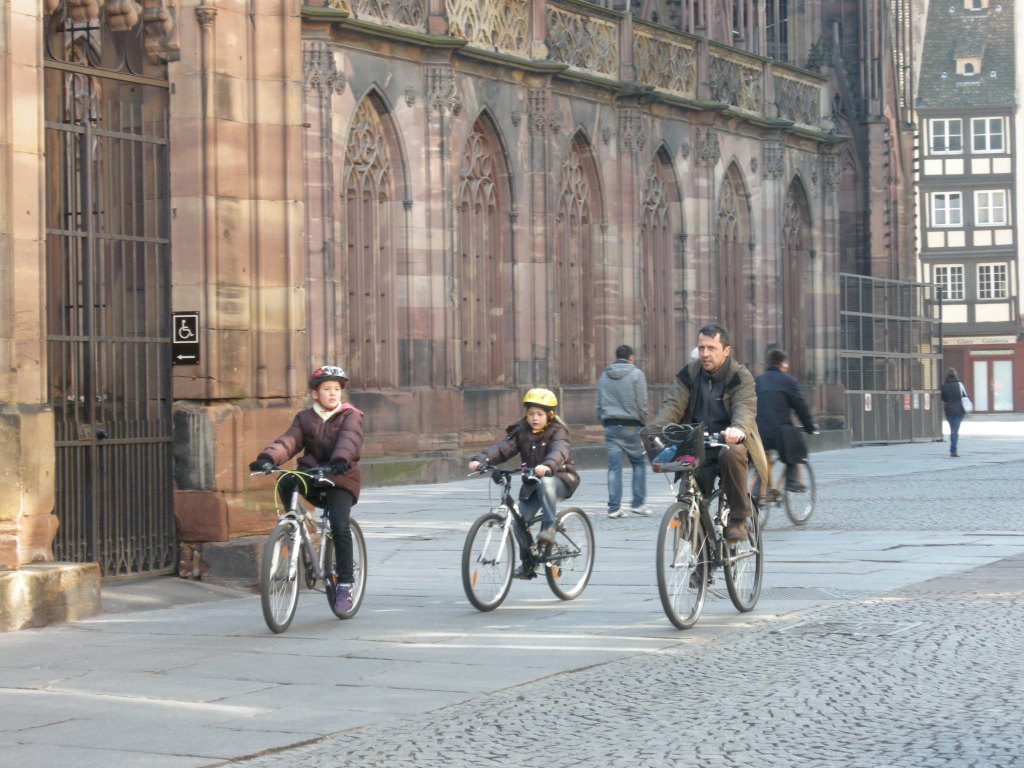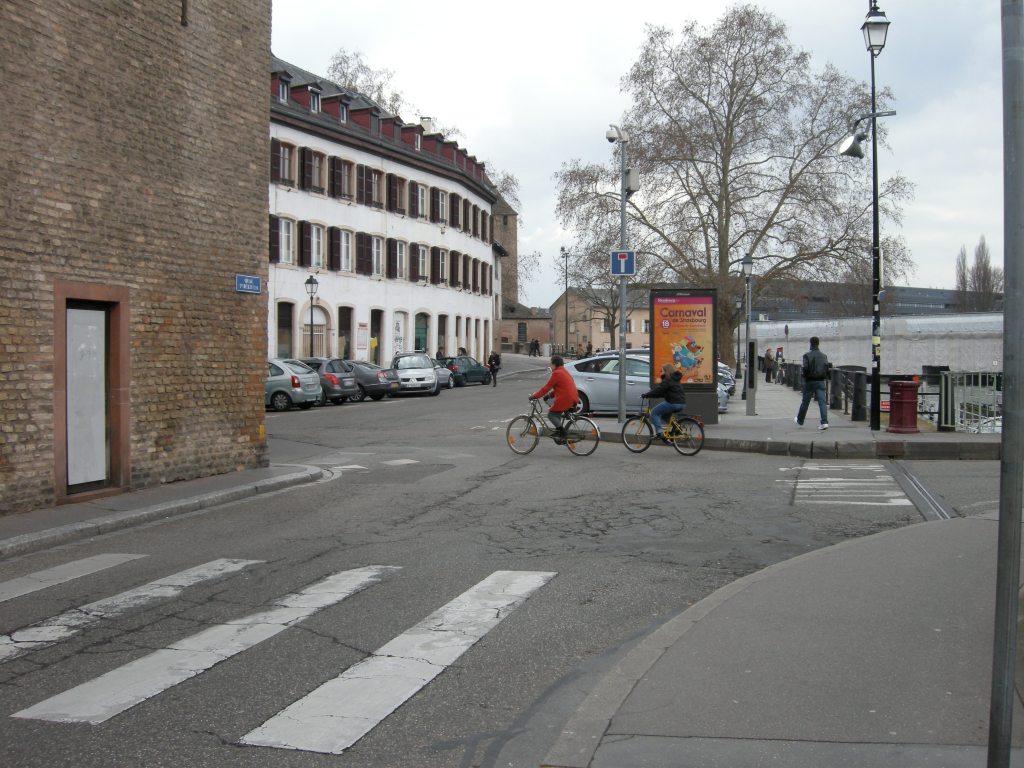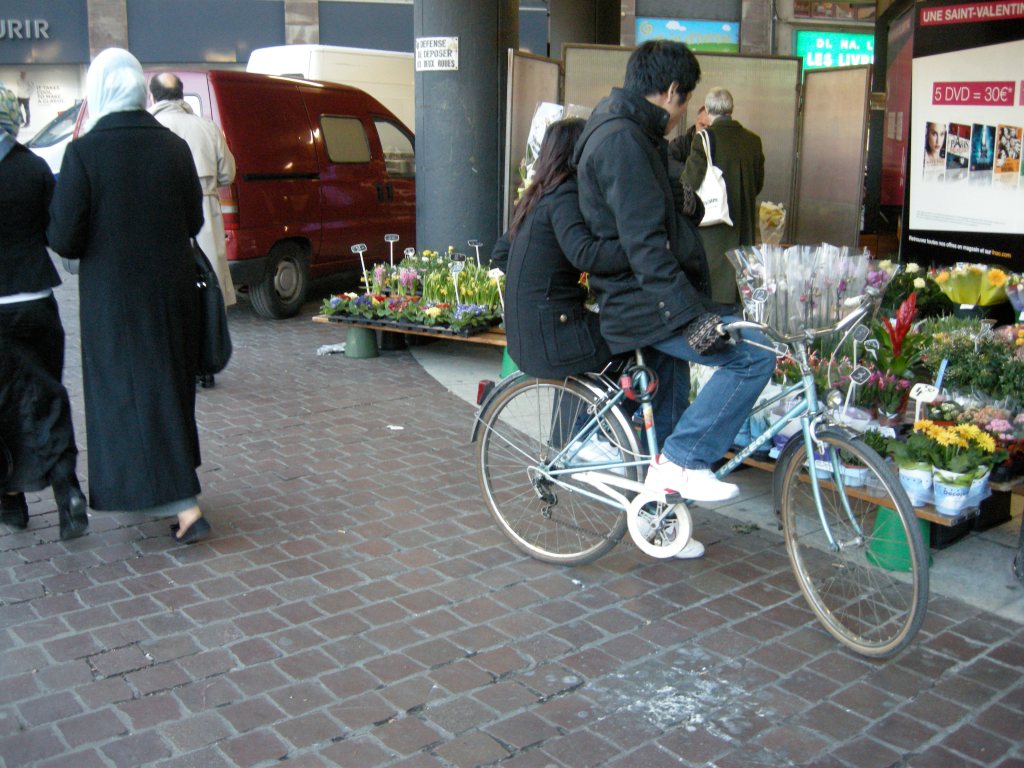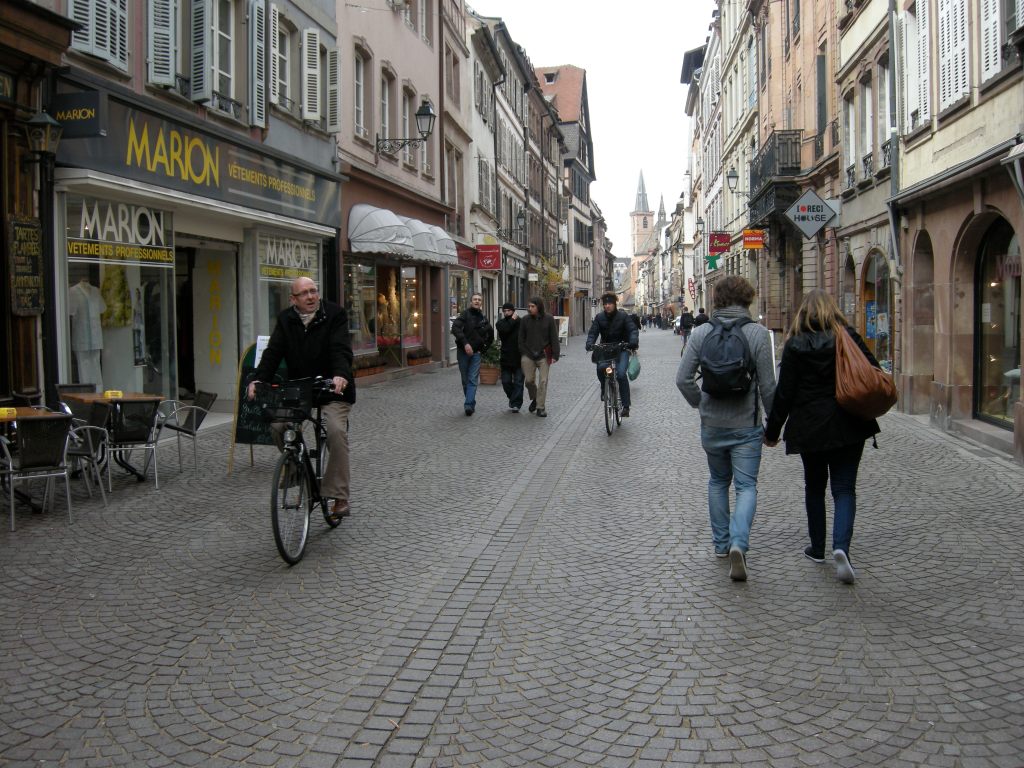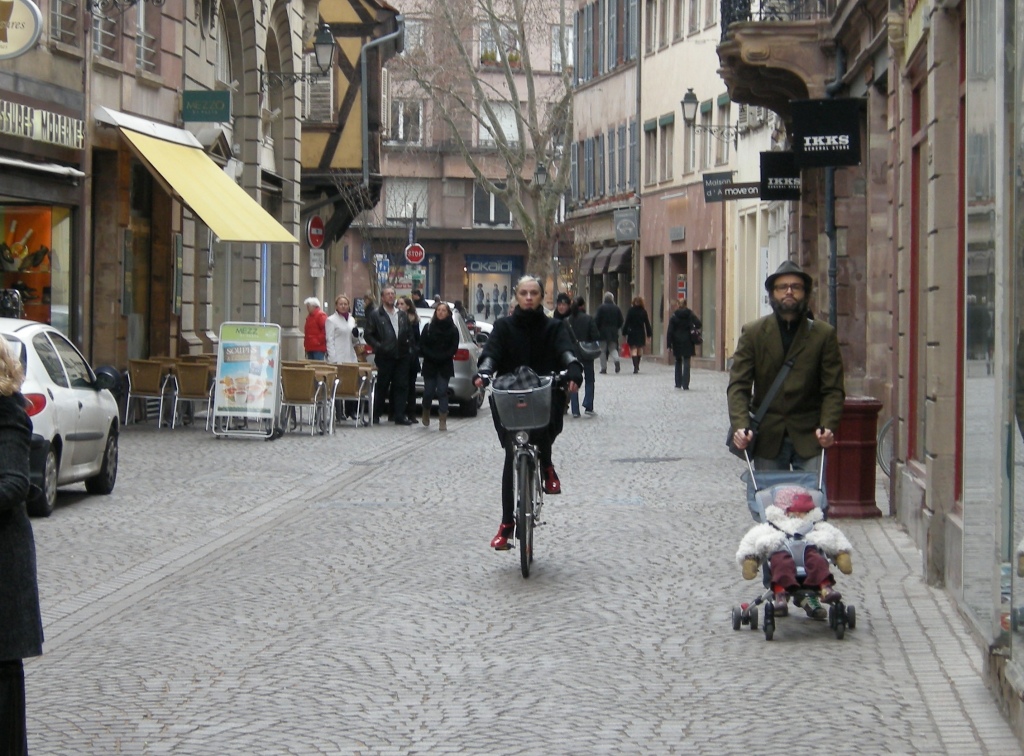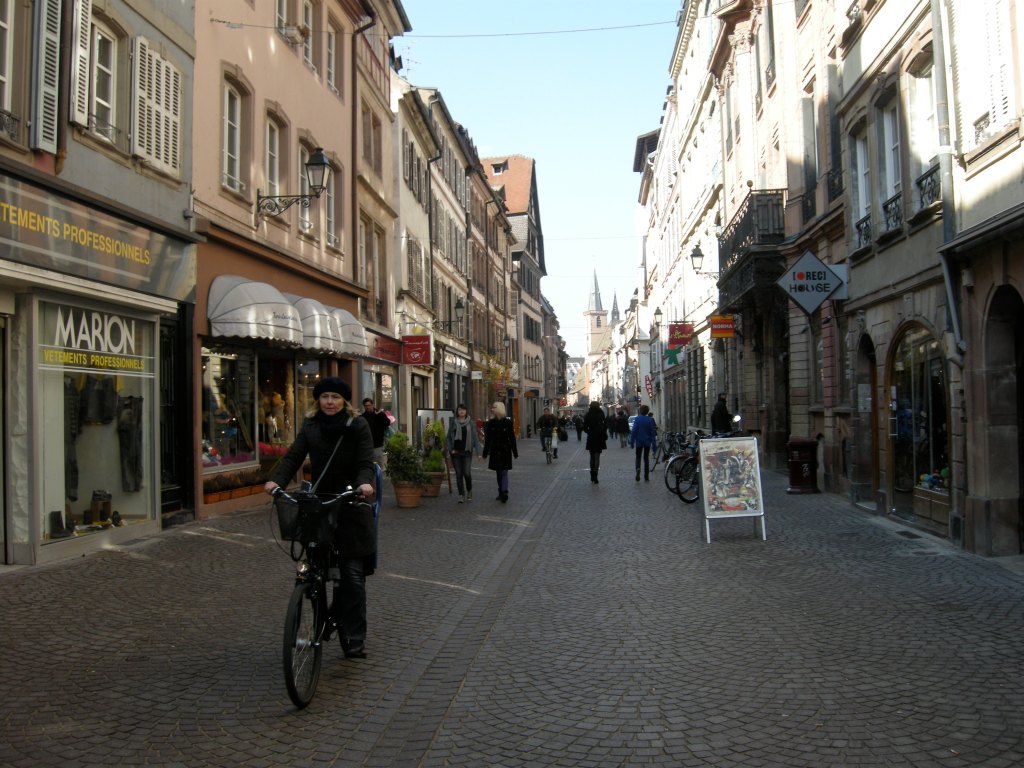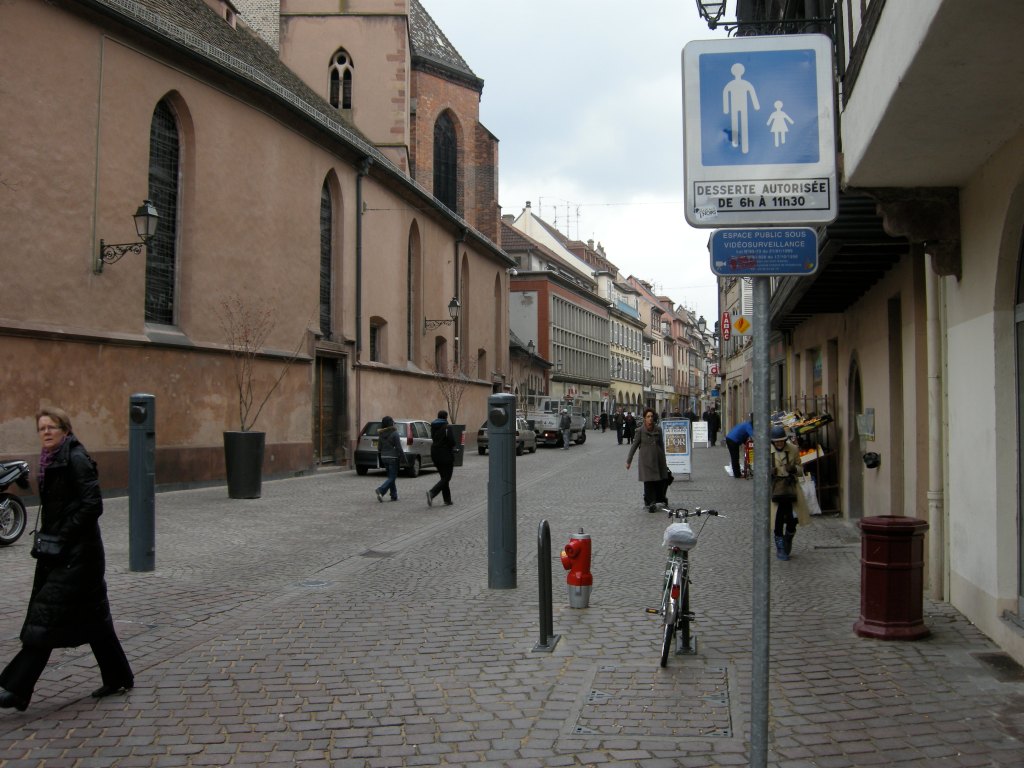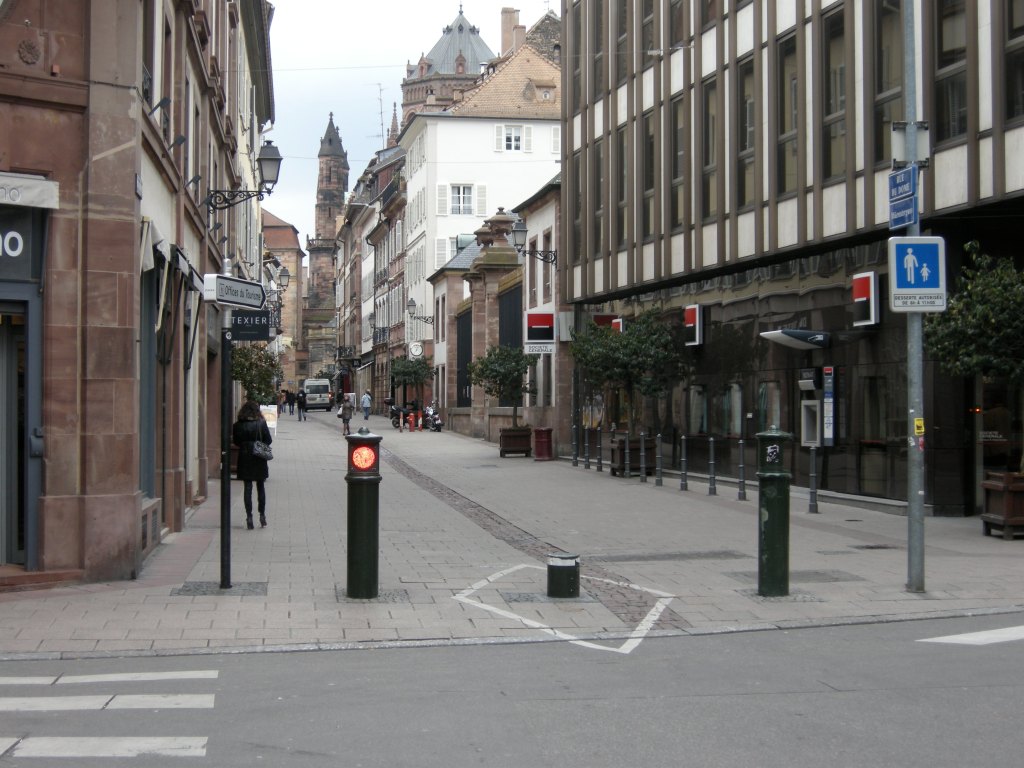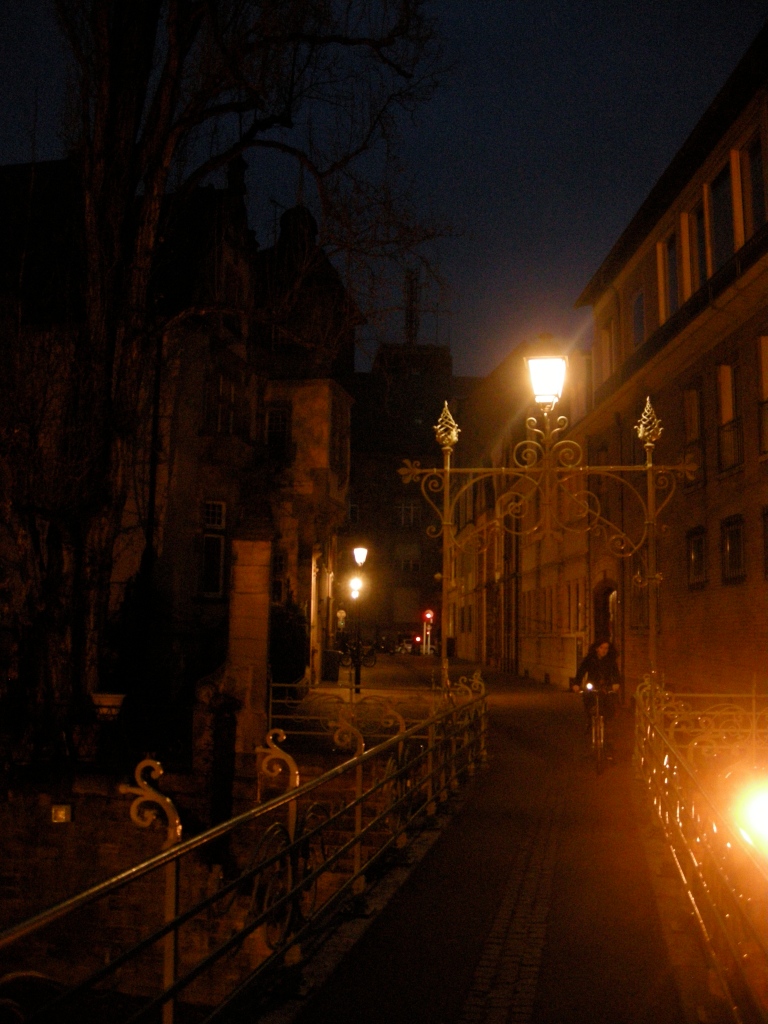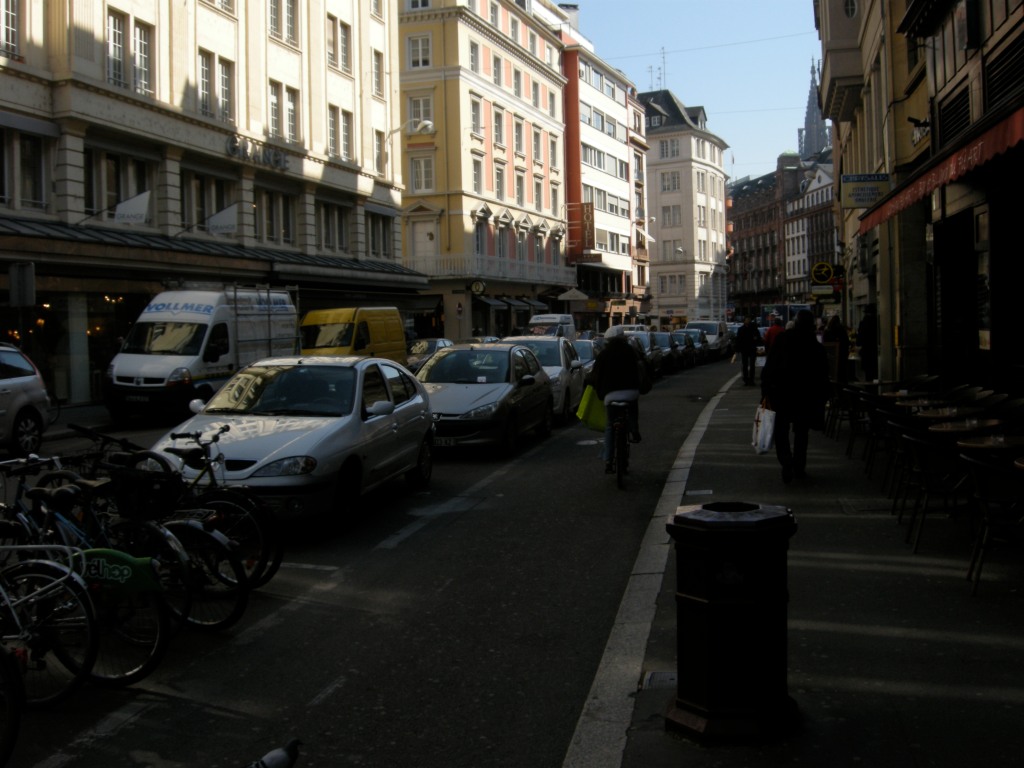Going Dutch in Strasbourg
This is a cross-post from As Easy As Riding A Bike
I have recently spent a short amount of time in two French cities, Strasbourg and Paris. Although only about two hours apart by train, the two places are of a very different character. A large part of this is due, of course, to geography and history; Strasbourg lies very close to the German border and has a particularly distinctive culture. The city has been part of the Holy Roman Empire, been a free republic, then annexed as part of France, then part of Prussia/Germany, then (briefly) free again, before finally ending up as part of France.
The result is a melange of architectural and cultural styles that is uniquely Alsatian. Just like the food. If it wasn’t for the French being spoken, and the French street signs, you could quite easily assume that you were in Germany. The most noticeable difference, however - at least to a person interested in walking and cycling as modes of transport – is that Strasbourg is very much more civilized than Paris. In fact, far more so. I say this not to denigrate Paris, which I think is a wonderful city, but only to emphasise just how much more pleasant it is to walk and cycle in Strasbourg. Paris, on the other hand, seemed to me to be fairly hostile for cycling – maybe not quite as bad as London, but pretty bad nonetheless. My thoughts on that city will come in a later post; for now I will focus on Strasbourg.
I should stress that I was only in the city for 48 hours, and also that my experience of Strasbourg was largely confined to the central Grande Île, a world heritage site. But with that caveat out of the way, I can certainly say that I have not seen such a quantity of cycling in any place outside of the Netherlands. Nor have I seen such a diverse range of people cycling in any place outside of the Netherlands. (Indeed, the parts of the city I saw were strongly reminiscent of the centres of cities in the Randstad, particularly in the layouts of the streets, and how they were used.) Plenty of the barometers of a naturalised and civilised cycling culture - what you might term 'indicator species' - were present. Young children cycling in a city.
Very young children cycling in a city.
Cargo bikes.
(A bit blurry due to the long exposure, but this is a Bullitt Cargo Bike).
We also had casual mobile phone use.
'The backie' - spotted on several occasions.
Another indicator - people were, almost without exception, cycling in their ordinary, everyday clothes. The only helmets I saw were on children - something that is also true of the Netherlands.
The city has a hire bike scheme, the bikes of which have an interesting driveshaft system, instead of a chain.
However, I didn't see many of these bikes in evidence. Generally everyone was using their own bicycle; the classic Strasbourg bike resembles the traditional Dutch Opafiets, but with a rather bendier down tube.
Plenty of pretty bikes on display too -
In short, cycling in Strasbourg looked like an obvious way to get around, and this was reflected in the large numbers of people, of every age, and of both genders, using bicycles as an everyday mode of transport. The reasons for this were not hard to discern. While not perhaps quite as subjectively safe as a Dutch city centre, it didn't appear to be particularly dangerous, hazardous or threatening to cycle around this part of Strasbourg. Parents felt comfortable taking their children around with them, principally, I suspect, because interactions with motor traffic would be minimal. Plenty of streets in central Strasbourg are either fully pedestrianised, and allow cycling, or they only allow access, for a limited number of vehicles, for a limited period of the day. You can see a number of these streets - which are cobbled or paved - in the photographs above. The street below is typical - only allowing authorised vehicles between 6am and 11:30am.
More restrictions -
Other streets which allow motor vehicles are almost entirely one-way; without too much investigation, I would guess that the alignment of these streets prevents them being used as through-routes, and allows access only. Again, as you can see in the photographs above, there are few motor vehicles using the narrow tarmac 'roads'. Naturally cyclists are exempted from these one-way restrictions.
There are also bridges onto and off the central island of Strasbourg that are for pedestrians and bicycles only.
The police!
So the central streets of Strasbourg are generally quiet, with low volumes of motor traffic. They consequently feel subjectively safe to cycle on.
This isn't the only part of the story, of course. I'm not too sure how extensive cycle paths and tracks are outside of the centre of the city, but I certainly saw them alongside some of the 'busier' streets with higher volumes of motor traffic, and they were greatly used.
Strasbourg hasn't got it absolutely right, of course - far from it. The infrastructure I saw, while much better than anything in the UK, was not up to Dutch standards. Likewise, a number of busy streets didn't feel particularly safe for cycling, with quite heavy traffic flows, and no mitigating measures whatsoever for cyclists. But the city does provide a good example of what can be achieved, and what can happen, when you implement Dutch-style solutions in a city, outside of the Netherlands.
Create safe conditions, make cycling feel pleasant and convenient, and the bicycle becomes a natural choice, for everyone. By contrast, if you pretend that the best way to increase cycling is simply to 'encourage' it, and implore any cyclists brave enough to venture onto your roads to 'keep their wits about them' in the absence of any other positive measures, any cycling revolution you engender will be stillborn.

